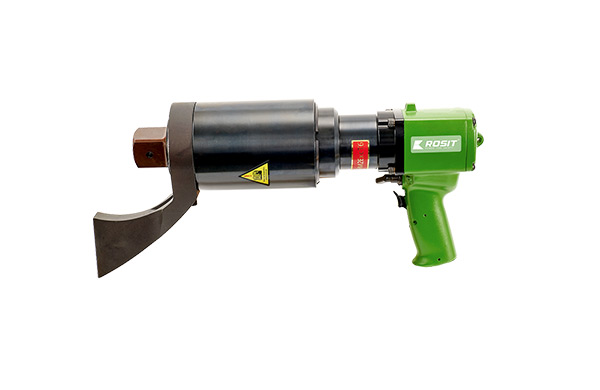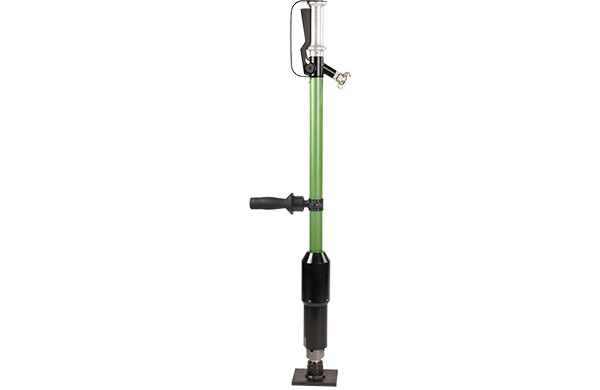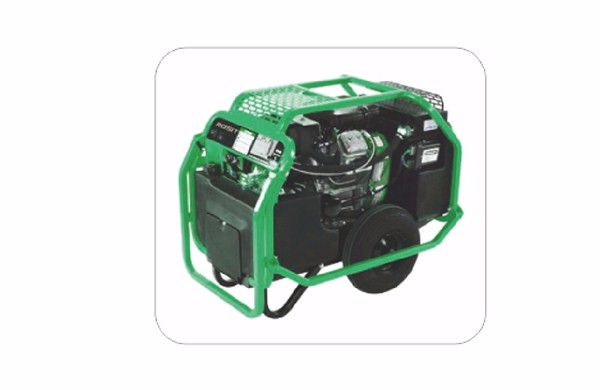- Power Tools
-

Saws
Chain Saw Concrete Chain Saw Band Saw Reciprocating Saw ...
-

Cutters
Pneumatic Cutter Pipe Cutting Machine Nut Cutter
-

Drills
Hammer Drill Pistol Hammer Drill Two Hand Operation Drill Column Drill ...
-

Impact Wrenches
Pneumatic Impact Wrench (Ex-proof Series) Pneumatic Impact Wrench (Ultra light Series) Emulsion Impact Wrench Nut Runner ...
-

Torque Wrenches
Pneumatic Torque Wrench Electric Torque Wrench Hydraulic Torque Wrench Hollow Hydraulic Wrench ...
-

Mining Waterjet Cutting Machine
Electric Mining Waterjet Cutting Machine Pneumatic Mining Waterjet Cutting Machine Emulsion Mining Waterjet Cutting Machine
-

Hammers
Pneumatic Chipping Hammer Hydraulic Chipping Hammer
-

Scaler
Pneumatic Long Reach Scaler
-

Rammer
Pneumatic Rammer
-

Grinders
Wet Grinder Angel Grinder Electric Grinder
-

Fan
Pneumatic Fan Heavy Fixed Fan
-

Hoist
Chain Hoist Electric Hoist Pneumatic Hoist Hydraulic Hoist ...
-

Winch
Pneumatic Winch
-

Pump
Pneumatic Submersible Pump Emulsion Submersible Pump
-

Assembly
Torque Multipler C-Hog Ring Plier
-
- Accessories
-

Cutting
Chainsaw Concrete Chainsaw Band Saw Reciprocating Saw ...
-

Drilling
Impact Drills Light Drills Magnetic Drills丨Rail Drills Balance Drills丨Angle Drills ...
-

Assembly
Impact Wrenches C-Hog Ring Plier
-

Hammer & Shovel
Chipping Hammer Derusting Shovel
-

Grinding
Grinders
-

Hydraulic Accessories
Nut Runner Cutter
-

General Accessories
Waterjet Cutting Machine Filter assy. Filter assy. Water Pump ...
-
- Company Profile
- Service
- News
-

Events
The 21st 2023 Taiyuan Coal (En The 17th Yulin International C The 20th TaiYuan (2021) Coal ( The 16th Ordors International Have a machine repaired or hav ...
-

Case Study
Specifications of adjustable w Have a machine repaired or hav
-

Industry News
Using Chainsaws to Cut Snow? What to do if the pneumatic wr Hydraulic chain saw Operation of the wrench Introduction to the principle ...
-
- Download
- Contact
How to configure the inlet and outlet pipes of the vortex pump
source:Industry News release time:2021-07-22 Article author:Rosit Popular:Air band saw
How to configure the inlet and outlet pipelines of the vortex air pump? The high-pressure vortex fan can be used for aquatic aeration, electroplating industry, sewage treatment, air knife drying and other purposes; the vacuum suction application of the high-pressure vortex fan can be used for: vacuum dust collection and material suction For loading, adsorption of objects, etc., the range of vacuum adsorption can be referred to "Which industries are suitable for vacuum adsorption of vortex fans"

Fan aeration application (aeration aquaculture, sewage treatment, etc.) piping method:
a. The total cross-sectional area of the branch pipe ≧ the cross-sectional area of the main pipe
b. The cross-sectional area of the main pipe ≧ the outlet area of the fan
c. The total cross-sectional area of the nozzle ≧ the outlet area of the fan
d. The length of the pipeline and the number of elbows should be slightly calculated for pressure loss
Air knife and nozzle pipe configuration method:
a. The total cross-sectional area of the branch pipe ≧ the cross-sectional area of the main pipe
b. The cross-sectional area of the main pipe ≧ the outlet area of the fan
c. The total cross-sectional area of the nozzle × (0.9~0.8) = the outlet area of the fan
d. The length of the pipeline and the number of elbows should be slightly calculated
Vacuum adsorption pipeline configuration:
a. The total cross-sectional area of the branch pipe ≧ the cross-sectional area of the main pipe
b. The cross-sectional area of the main pipe = the inlet area of the fan
c. The total cross-sectional area of the suction nozzle ≧ the suction area of the fan
d. The suction time should not exceed 5 seconds
Inhalation use dust, suction pipe configuration method
a. The total cross-sectional area of the branch pipe = the cross-sectional area of the main pipe
b. The cross-sectional area of the main pipe×1~0.8) = the inlet area of the fan
c. The total cross-sectional area of the suction nozzle × (0.9~0.8) = the suction area of the fan
d. The length of the pipeline and the number of elbows should be slightly calculated for pressure loss
Read recommendations:
GP61-400 Emulsion Submersible Pump
related articles
Using Chainsaws to Cut Snow?
2024-05-21What to do if the pneumatic wrench is weak
2022-12-19Hydraulic chain saw
2022-12-13Operation of the wrench
2022-12-06Introduction to the principle of pneumatic wrench
2022-11-28How to use the pneumatic wrench
2022-11-21Brief introduction to the principle of pneumatic wrench
2022-11-14Impact pneumatic wrench
2022-11-07Correct hydraulic wrench operation procedure
2022-11-01Hydraulic wrench torque pressure conversion
2022-11-01Field operation procedure of hydraulic wrench
2022-10-24Hydraulic radial plunger motor
2022-10-17The history of hydraulic motors
2022-10-17Principle of balance hydraulic wrench
2022-10-10The Price Factor of Smart Electric Torque Wrench
2022-10-10Introduction to the advantages of using intelligent electric torque wrench
2022-10-10The Price Factor of Smart Electric Torque Wrench
2022-10-10Classification and use of wrenches
2022-10-10hydraulic wrench pressure conversion
2022-10-10Introduction to the advantages of the use of intelligent electric torque wrench
2022-10-10Smart Electric Torque Wrench Selection Guide
2022-10-10Intelligent electric torque wrench for wind power generation
2022-10-09Uses of open-end wrenches.Pneumatic chainsaw
2022-10-08What are the driving parts of a hydraulic wrench and what they do
2022-09-30What are the driving parts of a hydraulic wrench and what they do
2022-09-23the commonly used wrenches
2022-09-22Introduction of several common wrenches
2022-09-21Application scope and daily maintenance method of hydraulic bolt tensioner
2022-09-20Characteristics of hollow hydraulic wrench and precautions for use
2022-09-19Characteristics and precautions of driving hydraulic wrench
2022-09-17Power Tools
AN22-750 Pneumatic Torque Wrench (Straight Shank)
2020-06-13DB21-018 Pneumatic Rotary Drill Heavy Duty
2020-06-13CC21-430 Pneumatic Chainsaw (3.0 kw Series)
2023-06-14LH22-002 Pneumatic Hoist
2023-06-29CR21-008 Light Pneumatic Reciprocating Saw
2020-06-13RC21-1200 Pneumatic Long Reach Scalers
2023-06-27RC21-1500 Pneumatic Long Reach Scalers
2023-06-27AW22-3000 Pneumatic Impact Wrench (Ultra-Light Series)
2021-06-15RH31-1800 Hydraulic Chipping Hammer
2023-06-27RH31-1550 Hydraulic Chipping Hammer
2023-06-27AN11-3000 Electric servo CNC Torque Wrench
2023-06-27RH21-1100 Pneumatic Chipping Hammer
2021-06-16OF23-520 Pneumatic Fan (light/medium)
2022-12-29LH61-025 Emulsion Hoist
2023-06-29CC20-380 Pneumatic Chainsaw
2020-06-13DP21-140 Pneumatic Two Hand Operation Drill
2021-06-15DM22-030 Pneumatic Rail Drill
2023-06-19DH21-050 Pneumatic Hammer Drill
2021-06-10DC31-150 Hydraulic Core Drill
2023-01-03AW41-2500 Emulsion Impact Wrench
2021-06-15AN71-3500 Torque Multiplier
2023-06-29AN51-8000 Electric servo CNC Torque Wrench
2023-06-27AW41-1500 Emulsion Impact Wrench
2020-06-13AN51-4000 Electric servo CNC Torque Wrench
2023-06-27DP22-220 Pneumatic Column Drill
2023-06-19GG21-125 Pneumatic Angel Grinder
2021-06-15OW64-020 Integrated Emulsion Mining Waterjet Cutting Machine
2023-05-10AK22-030 Pneumatic C-Hog Ring Plier (2.0 coil)
2022-12-12DB21-100 Pneumatic Rotary Drill Heavy Duty
2023-06-19CD22-630 Pneumatic Concrete Chainsaw (5.0KW)
2023-06-16Accessories
Oiler
2020-06-13Abrasive Blades
2023-06-07Alloy Twist Drill Bits
2023-06-06Alloy Saw Blades丨CR811 Series
2023-06-06Pipe Fixed Clamps丨CB861-18
2023-06-06Carbide Hollow Bits丨DM816 Series
2023-06-06Alloy Saw Blades丨CR814 Series
2023-06-06Hydraulic Regulating Valve
2023-06-07Alloy Sleeves
2023-06-07Alloy Saw Chains丨CC812/CC816 Series
2023-06-06Ex-proof Sleeves
2023-06-07Drill Bit Extension Rods丨DC88 Series
2023-06-07Alloy Twist Drill Bits丨DB81 Series
2023-06-06Non-metallic Alloy Saw Blades
2023-06-06Clamps
2023-06-06Rail Clamps丨CB864-12
2023-06-06Alloy Saw Blades
2023-06-06Chisels
2023-06-07Core Drill Morse Taper Sleeves
2023-06-07Carborundum Saw Chains
2023-06-06Integrated Hollow Drill Bits丨DC81
2023-06-07Hard Alloy Hollow Drill Bits assy.丨DB85 Series
2023-06-07Diamond Saw Chains
2020-06-13Ex-proof Sleeves KIT
2023-06-07Diamond Saw Blades
2023-06-06Carbide Inserts Twist Bits assy.丨DB83 Series
2023-06-07Split Hollow Drill Bits丨DC82
2023-06-07Alloy Saw Blades丨CR815 Series
2023-06-06Water Pump
2020-06-13Carbide Inserts Twist Bits丨DB82 Series
2023-06-06

















 You are here: >
You are here: >



